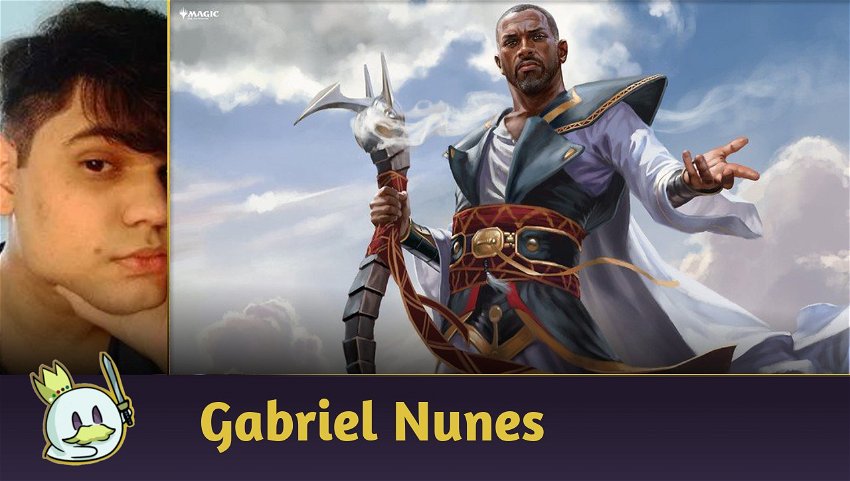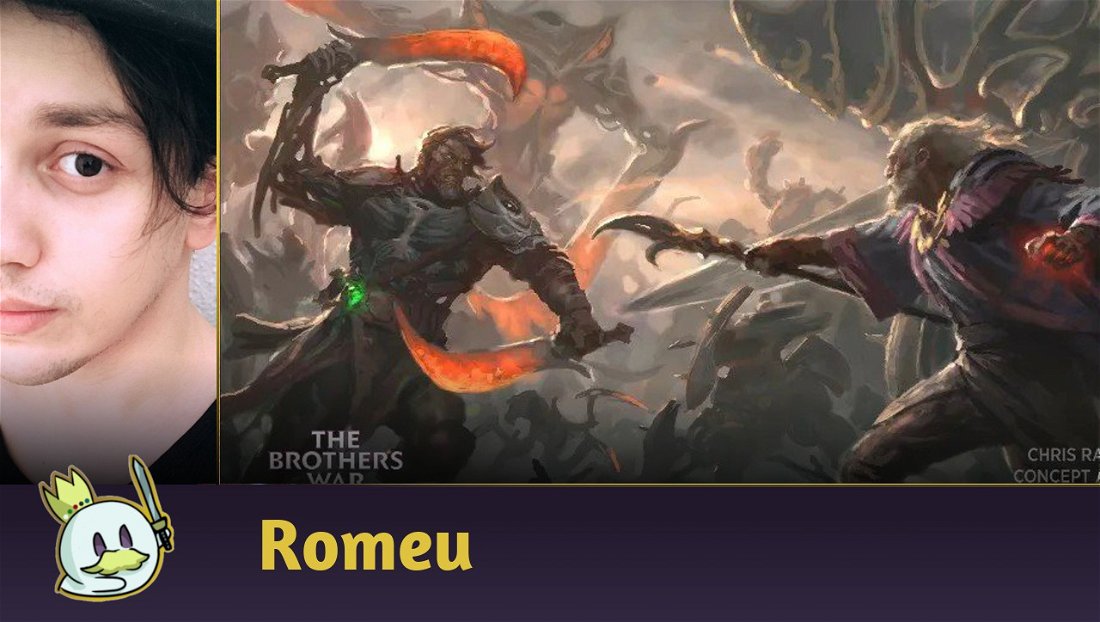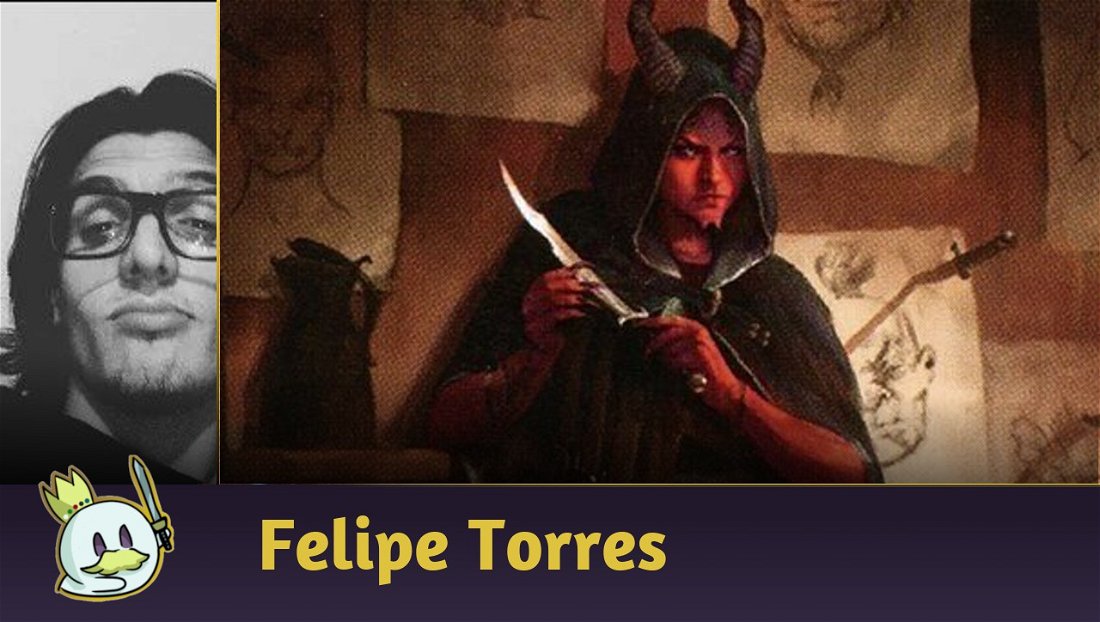We all know how fluid and changeable the Metagame is and that even when decks are more consolidated, they keep changing usability and frequency with each other. That said, one of the archetypes that is most aware of this is control; precisely because it is a meta-reactive deck type, control decks constantly look for the most optimized approaches to fighting what is most present. An environment with more light and aggressive creatures requires more removals, while a metagame with a strong combo makes counterspells and hates more necessary, for example.
Ad
Control players are always updating their list and sideboard, and proof of that is the Jeskai Control list that the player HeyPharaoh used to get a place in the top 8 of the Challenge that took place on January 8.
The Decklist
A few months ago I wrote a article talking about Talisker’s Jeskai Stoneblade, which was a deck that also aimed at an effective answer to the Metagame, with several proactive hates and a gameplay similar to Legacy’s Mono Red Prison, is an approach with the same purpose and in the same colors as the deck we are going to analyze today, but it's entirely different from HeyPharaoh's deck, which plays reactively, with numerous instants to take advantage of momentum and punish your opponent’s play.
Interactions

And here we have the clearest examples of interactions at instant speed. Starting with the most classic of them all, Counterspell is pretty much Magic's ultimate counter, has a cost that's considered the standard cost of a basic counter, and guarantees efficient mana answers, both at the beginning and end of the game.
On the other hand, Fire // Ice is a card that gains space thanks to its versatility, even if neither of its effects are so powerful, when together in just one card, they bring a series of possibilities and plays to the deck. In addition, both effects are well positioned these days: Fire covers the space for useful removals for 1-toughness creatures, which is extremely welcome in the environment, while Ice is a Tempo play that replaces itself, great for giving you one more turn against a Death's Shadow or a Murktide Regent.
Speaking of versatility, Archmage's Charm is one of the most versatile cards in Modern. Being a board disruption, counter or even a card advantage source, it’s so powerful that it replaced Cryptic Command, which even though it has more powerful effects, costs an extra mana, which is a great reason not to run it in a format focused on mana efficiency.

But instants aren't the only cards with this speed that the deck has, as it has two mighty permanents that have flash. Solitude today is one of the most important removals of the format, being a Swords to Plowshares that costs a card in hand instead of a mana, the card becomes a removal that manages to resolve early game threats, like Ragavan, Nimble Pilferer without losing its strength against late game threats. Furthermore, even if a 5 mana creature is something expensive by today's standards, in a control deck it's perfectly possible, so it's also a creature that can grants more life, or even finishes the game.
Dress Down can be considered more of a cantrip with secret abilities. In some games, the card will be more of a resource to replenish and dig up your effective cards, but it's true that in addition, the card can often save you on several occasions - most creatures in Modern see play for their abilities, and removing this is extremely useful when used correctly.
Ad
Making a Primeval Titan not search for a land, make Ragavan just a 2/1 beater, or even prevent Infect from finishing off are all powerful applications that makes the enchantment an extremely useful card.
Shark Typhoon is both a "creature" made to buy time and a powerful finisher. Thanks to cycling, Typhoon becomes a powerful action, hard to counter, that will draw a card and, moreover, leaves a body on the board, as big as you can afford! This ranges from "a surprise 2/2 that will exchange with an opposing creature" to "a 5/5 that will fly and hit the opponent four times, winning the game."

But it's not just on instants that control lives, is it? And some spells are just too strong to be left out. Prismatic Ending is definitely one of the best removals Magic has, as I've said a few times, and its strength is increased in multicolored decks, and with access to three colors, Jeskai can rip off a huge amount of permanents relevant in the format, which is extremely relevant for this Jeskai setup, Prismatic Ending is still extremely cost-optimized for what it does, and will often be cast when you already have some backup.
Supreme Verdict on the other hand, does only one thing, but it does it very well. It is an extremely reliable and useful board sweeper these days, as Counterspell is a widely played card since it arrived in Modern, in addition to several other counterspells. The Verdict has the same converted cost as the standard sweeper, but with a very relevant increase in many matchups, such as against Death's Shadows and Murktides, which have plenty of counterspells to protect their threats.
Winconditions & Planeswalkers

Completing our control pieces, here we have card types that since they appeared in Magic, have been present in almost all control decks: Planeswalkers! Being control pieces and often win conditions, planeswalkers had their use consolidated thanks to various factors; being a board presence that isn't hit by your sweepers, having offensive and defensive abilities, granting you some life thanks to the attacks they receive, among other important factors for a deck in this archetype.
It's impossible to think of them without thinking of Jace, the Mind Sculptor. Long considered the best planeswalker ever released, Jace can still keep up with newer planeswalkers, thanks to the fact that he does everything a control deck wants. Jace draws cards with a large selection (the famous Brainstorm), can dig cards for you or control the opponent's top, has a board disruption, even if it's not a removal, not to mention his ultimate that wins the game almost literally (with style points, exiling the opponent's deck is pretty cool). It's true that even so, Jace today has some pretty powerful competitors, like the one we're going to see later, so only one copy of Mind Sculptor is being used here, but still, its usability is beneficial most of the time it enters the battlefield.
Ad
One of the few things better than a four mana planeswalker is a three mana planeswalker! And to illustrate that, let's talk a bit about Teferi, Time Raveler, which is not focused on being a wincondition, but a resource, with a static ability that difficults the opponent's life in several ways, since acting only at sorcery-speed is something boring for any deck, but as we looked at the nuances of this static, we found that it precludes relevant mechanics like Cascade. In addition, Time Raveler has other great abilities, with a +1 that corrects the "defect" of our spells (casting a Supreme Verdict in the opponent's combat phase is evil), and also a negative ability that can be used both against our opponent, as Jace's ability is used, but that can be used to generate card advantage along with our Dress Down.
Unlike its three-mana version, Teferi, Hero of Dominaria enters to win the game, but not clearly; it doesn't create bodies or deal damage like other planeswalkers that are winconditions. Instead, it makes the opponent's game "unplayable" until they realize they've lost. A well-protected Teferi for two or three turns, jumps you into action and card advantage at such a great distance that it is very difficult to deal with the scale that his positive ability causes, drawing numerous cards and giving you "extra mana" to use them. In addition, he has disruption as his negative ability and an ultimate that, again, doesn't clearly win the game, but makes the opponent have a hard time connecting any decent play.

Another important wincondition for control decks are the manlands, which are a way to get offensive power in lategame without spending slots for it and, mainly, without them dying to your Supreme Verdict. Their activation cost is steep, but first we're talking about a late game deck, where you'll have access to a lot of mana, second that thanks to our Teferi, Hero of Dominaria, it's possible to optimize your mana, activating your lands and still keep some backup counterspell or removal.
Other Cards
This is pace is for cards that don't fit exclusively into the topics above, but that were also critical pieces for the deck.

An essential requirement for a control is to draw several cards, but as Magic evolved, cards that associate card draws with other functions started to appear more, as we can see in this list, with Archmage's Charm, Fire // Ice, Shark Typhoon and Dress Down, which are cards that replace themselves (or even bring card advantage), but that are in the deck for combining draws to other functions
Memory Deluge is the only card that is in the deck only to draw and select cards, but this is a testament to how powerful it is in this role. Deluge can be used twice, it's an instant, and it doesn't just draw two cards, it draws two of the best cards out of the top four or seven cards, which makes it much easier to find specific answers.
Ad

Speaking of specific answers, Chalice of the Void is a very interesting "silver bullet" here. Thanks to the large number of cards that the deck draws per game, it is safe to have a copy of one of the best positioned cards in the Metagame, and that almost always has some use when made with 0 or 1 counter, another exciting point is that no card from our deck is countered by a Chalice with such counters, as the entire build runs cards that cost more than two mana (Except for Prismatic Ending, which has a malleable cost), and this causes the Chalice to end up taking several decks by surprise on Game 1.

And here we also have our companion! Kaheera, the Orphanguard is not the most synergistic card in the deck, but an extra card for free is very desirable for a control list. The card can be used as a beater in a long-drawn-out late game, a blocker to keep you alive or even to more easily pay Solitude’s evoke cost, without losing more important cards.
Conclusion
There are many ways to react to the Metagame, and most have their advantages and disadvantages. Knowing this is very indispensable for a control deck, which can switch to something more proactive like a "prison" or something more reactive like a "draw-go". Heypharaoh chose to combine proactive impactful cards like Teferi, Time Raveler and the other planeswalkers, with various powerful instant reactions like Counterspell and Archmage's Charm, all with a focus on better sequences, backups and mana optimization.
That’s all for today, see you next time!









— Kommentare0
Sei der erste der kommentiert